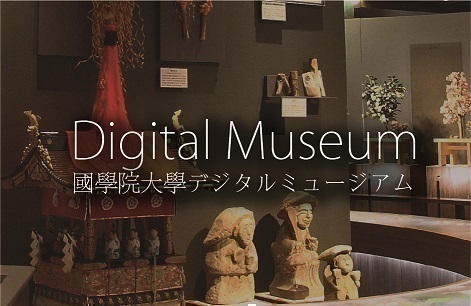- トップ
- Encyclopedia of Shinto
- Tendō shinkō
Encyclopedia of Shinto
| Main Menu: | |
| Links: |
詳細表示 (Complete Article)
| カテゴリー1: | 6. Belief and Practice |
|---|---|
| カテゴリー2: | Folk Religion |
| Title | Tendō shinkō |
| Text | Religious thought and practice focused on the deity Hinokami (see Amaterasu) and Hinokami's child, Tendō Hōshi, transmitted within the folk traditions of the Tsushima Islands (a five-island archipelago) in a form that also subsumed belief in agricultural and ancestral spirits (kokurei and sorei). Geographically, the Tsushima islands are located between Kyushu and the Korean peninsula. Serving as a connection point for cultural exchange with the continent, the islands were an important site of maritime trade and communication. The topography of the Tsushima islands is mountainous, and arable land is scarce. In the early modern period, a unique form of governmental control was imposed and a medieval social structure remained firmly in place. The most conspicuous feature of Tendō faith in the Tsushima islands is a religious form that is not connected with shrines and objects of worship (shintai). Tendō-chi, the sacred space of Tendō faith, consisted of a ritual altar called a kanagura constructed in a lush forest called a shige. The kanagura is a kind of temporary shrine (himorogi) and place of descent for the gods (iwakura). This preserves old ritual forms like those that might have been found at ancient Shinto sites on the mainland. Such practices also appear as elements of rituals on the Korean peninsula and of mountain worship. The connection with Hinokami is found in the record of Emperor Kenzō (reigned 485-487 CE) in Nihon shoki. According to this text, an oracle (kamigakari-takusen) of Tsukinokami (see Tsukuyomi) commanded Oshiminosukune, the ancestor of Ikinoagatanushi, to perform rituals at the shrine (hokora) of Tsukinokami's ancestor, Takamimusubi, and Hinokami's oracle likewise commanded Tsushimanoshimotsuagatanoatai to perform rituals at the shrine of Takamimusubi, who was also Hinokami's ancestor. This Hinokami ritual is assumed to be associated with Tsushima's Shimotsuagataamateru Jinja, a shikinaisha (an ancient term for imperial and provincial Shinto shrines) with connections to Hinokami going back to very ancient times. In this same shikinaisha, there is also a shrine dedicated to Amanotakutsutamanomikoto (天神多久頭多麻). The characters 天神 (amatsukami, "heavenly kami") of Amanotakutsutamanomikoto can also be read "tenjin." Tenjin can refer to the Heian-period courtier Sugawara no Michizane, who was deified as Tenman Tenjin. But Amanotakutsutamanomikoto shrines existed throughout Japan prior to the deification of Sugawara no Michizane. Even today, few Tenjin shrines in Tsushima celebrate Tenman Tenjin. A tradition that viewed Tendō as a mikogami ("offspring kami;" kami who are offspring of a shrine's main kami) was also added to this ritual complex. In the medieval period, Shinto scholars, because of connections with the astrological system known as Sukuyōdō, speculated on the association between Gozu Tennō ("ox-head emperor;" a name for the deity Susanoonomikoto) and Tendō. Alternatively, it is possible that Tenjinmiko, who appears in the Age of the Gods (jindai) section of the Nihon shoki, influenced the systemization of these traditions. Tendō or Tendōdōji, born as his mother faced the sunlight, became known as Tendō Hōshi, and cured the emperor's illness through tortoise-shell divination (kiboku). He returned to Tsushima and entered nirvana as the bodhisattva Tendō. The general outline of the traditions saying that he received the veneration of the islanders took form in such texts as the Taishū jinjashi (1686) and the Tendō hōshi engi (1690). In this manner, Tendō legends are understood as belief in mother and child deities, but it is also possible to consider this as belief in three gods with one body, with Hinokami as the father deity. On Iki Island, remnants of Tendō faith are still found. — Yonei Teruyoshi |




